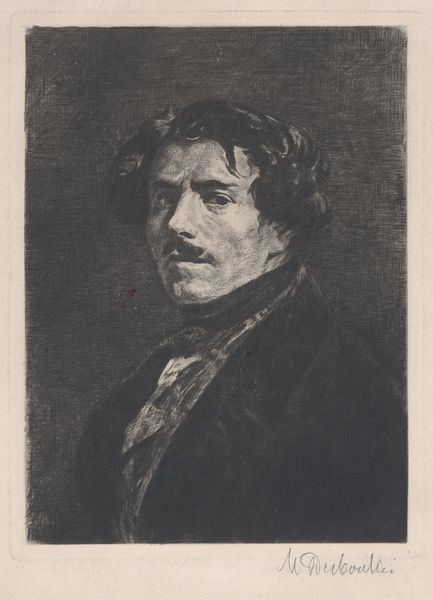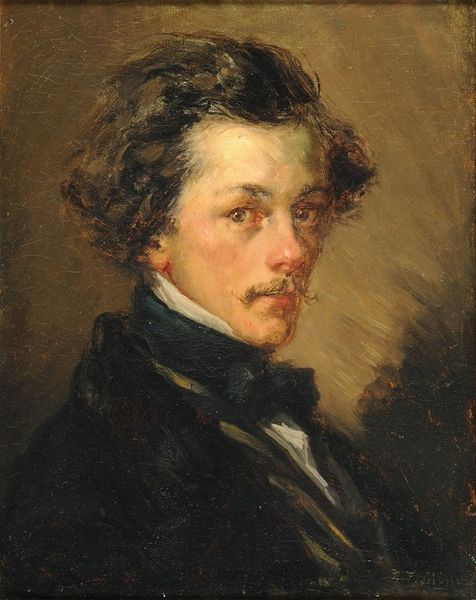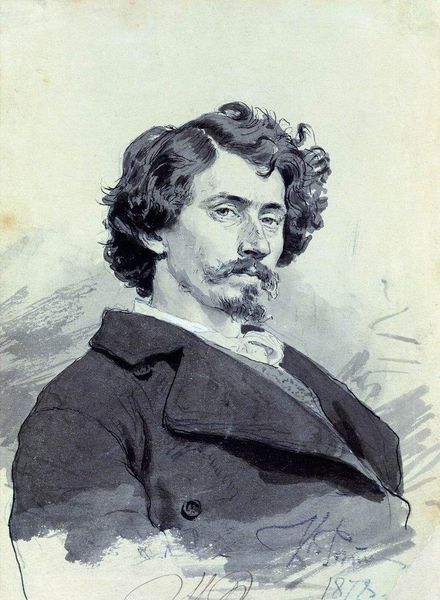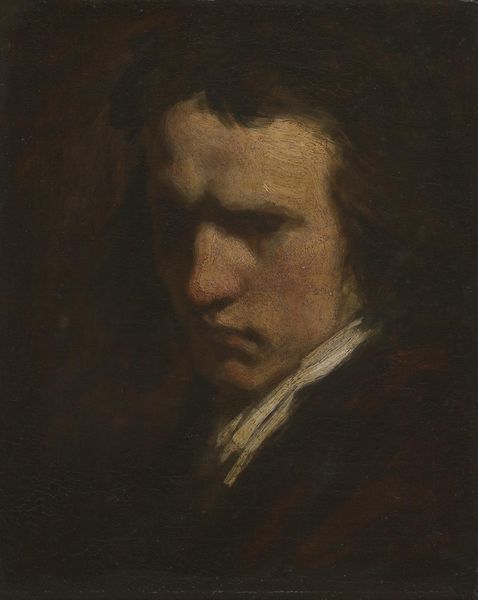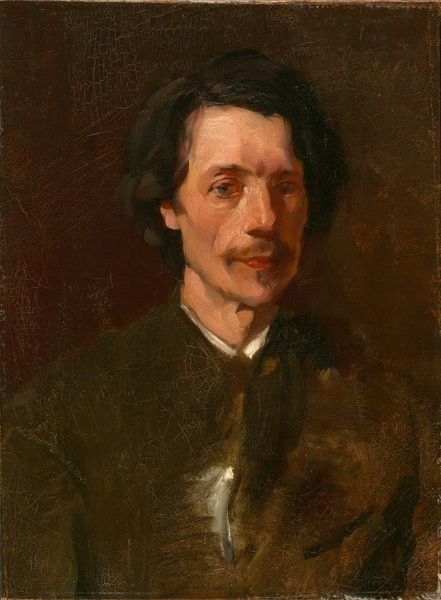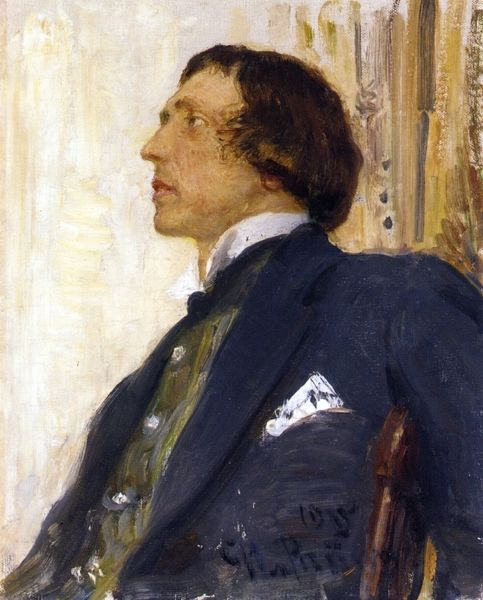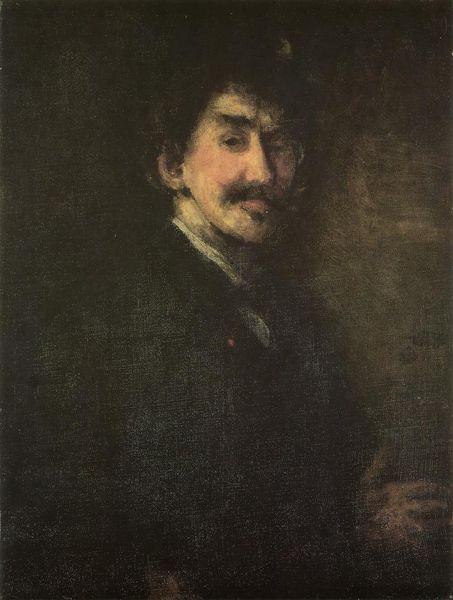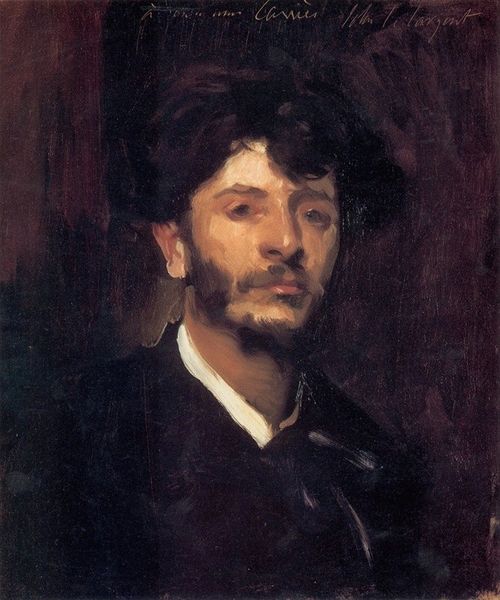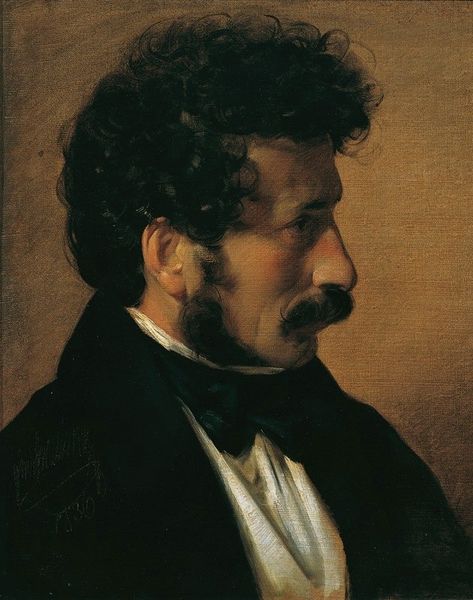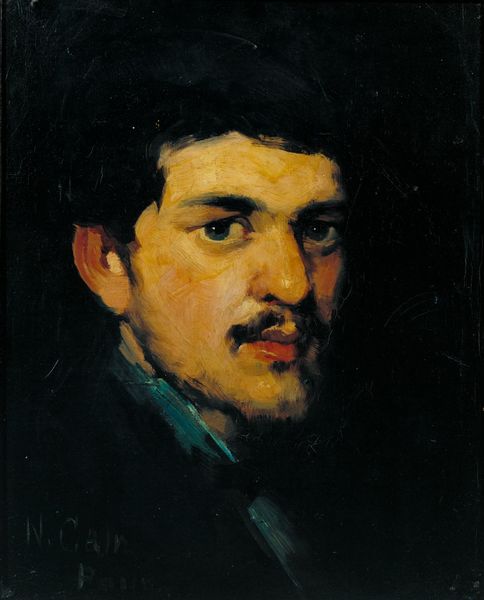
painting, oil-paint
#
portrait
#
self-portrait
#
painting
#
oil-paint
#
romanticism
#
chiaroscuro
#
history-painting
Dimensions: 65 x 54 cm
Copyright: Public domain
Editor: Here we have Eugène Delacroix’s "Self-Portrait" from 1837, made with oil paint. It’s strikingly moody. What strikes me is how tangible the textures seem, from the brushstrokes creating the background to the fabric of his coat. How do you interpret this work? Curator: Focusing on materiality reveals a lot. Oil paint, then as now, was a commodity. Delacroix's use of it isn't just representational; it's about his relationship to the economic system supporting artistic production. Consider the pigment: where did it come from? How was it processed, distributed? What labour underpinned its availability to Delacroix? Editor: That's a fascinating way to approach it. So, beyond just seeing the brushstrokes as expressive, you're suggesting they are indicative of material consumption? Curator: Exactly. Think about the layering. Each layer represents time, expense, and a conscious decision about resource allocation. And it raises a broader question: what's the social status implied by his access to such materials? Not everyone could afford the time and materials to produce a painting, let alone a self-portrait. Editor: It really puts the focus on what went *into* the making of this. I usually just think of the final image. Curator: Precisely! And that background isn’t just “background.” It’s carefully manipulated paint, a deliberate crafting of depth and shadow with material means. Even the chiaroscuro isn't purely aesthetic; it reflects a manipulation of light and dark, a material transformation of space. Editor: So looking at art through the lens of materials opens up a completely different field of enquiry, where consumption, resources and access are all part of the picture. Curator: Indeed. We move beyond surface representation into a deeper understanding of art as a product of its material and social context.
Comments
No comments
Be the first to comment and join the conversation on the ultimate creative platform.

